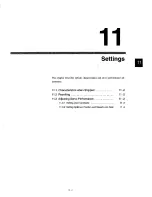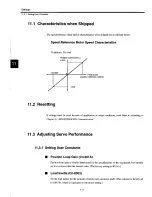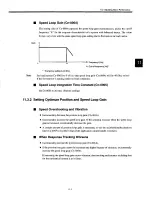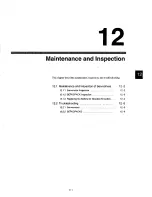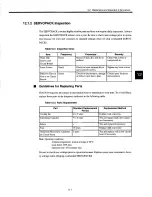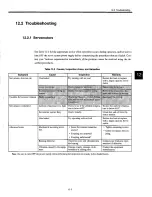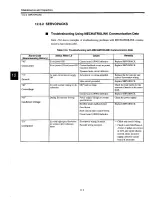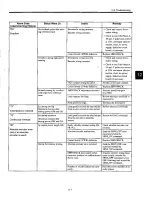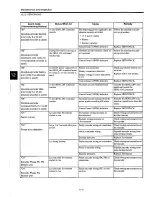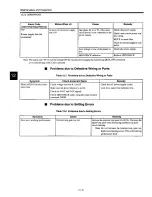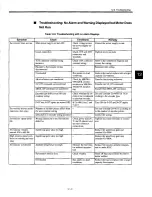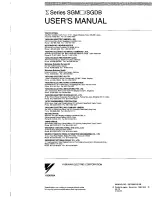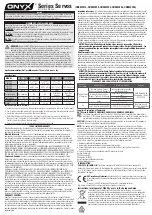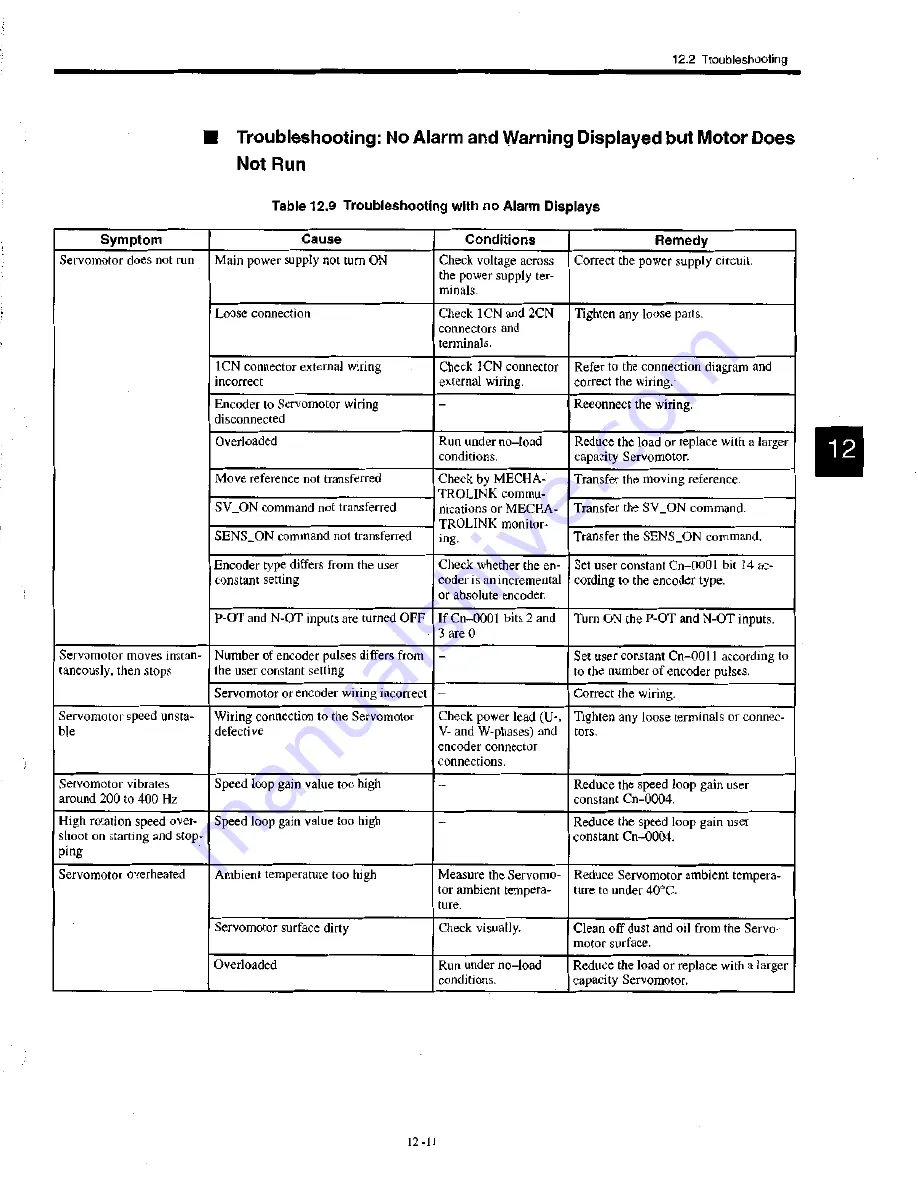
12.2 Troubleshooting
Symptom
Cause
Conditions
Remedy
Servomotor does not run
Main power supply not turn ON
Check voltage across
the power supply ter-
minals.
Correct the power supply circuit.
Loose connection
Check 1CN and 2CN
connectors and
terminals.
Tighten any loose parts.
1CN connector external wiring
incorrect
Check 1CN connector
external wiring.
Refer to the connection diagram and
correct the wiring:
Encoder to Servomotor wiring
disconnected
—
Reconnect the wiring.
Overloaded
Run under no—load
conditions.
Reduce the load or replace with a larger
capacity Servomotor.
Move reference not transferred
Check by MECHA-
TROLINK commu-
nications or MECHA-
TROLINK monitor-
ing.
Transfer the moving reference.
SV_ON command not transferred
Transfer the SV_ON command.
SENS_ON command not transferred
Transfer the SENS_ON command.
Encoder type differs from the user
constant setting
Check whether the en-
coder is an incremental
or absolute encoder.
Set user constant Cn-0001 bit 14 ac-
cording to the encoder type.
P-OT and N-OT inputs are turned OFF
If Cn-0001 bits 2 and
3 are 0
Turn ON the P-OT and N-OT inputs.
Servomotor moves instan-
taneously, then stops
Number of encoder pulses differs from
the user constant setting
—
Set user constant Cn-0011 according to
to the number of encoder pulses.
Servomotor or encoder wiring incorrect —
Correct the wiring.
Servomotor speed unsta-
ble
Wiring connection to the Servomotor
defective
Check power lead (U-,
V- and W-phases) and
encoder connector
connections.
Tighten any loose terminals or connec-
tors.
Servomotor vibrates
around 200 to 400 Hz
Speed loop gain value too high
—
Reduce the speed loop gain user
constant Cn-0004.
High rotation speed over-
shoot on starting and stop-
ping
Speed loop gain value too high
—
Reduce the speed loop gain user
constant Cn-0004.
Servomotor overheated
Ambient temperature too high
Measure the Servomo-
tor ambient tempera-
ture.
Reduce Servomotor ambient tempera-
ture to under 40°C.
Servomotor surface dirty
Check visually.
Clean off dust and oil from the Servo-
motor surface.
Overloaded
Run under no—load
conditions.
Reduce the load or replace with a larger
capacity Servomotor.
■
Troubleshooting: No Alarm and Warning Displayed but Motor Does
Not Run
Table 12.9 Troubleshooting with no Alarm Displays
12-11

